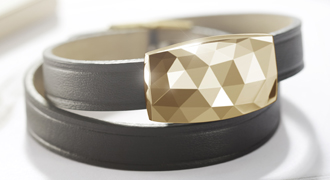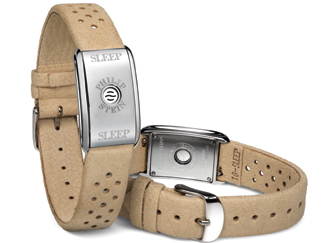Wear it wellness
The market for wearable technology is on the rise and it’s making its way into the beauty industry, find Eve Oxberry and Lucy Douglas
Innovation in technology is constantly changing the way we do things, from taking photos to reading the news and communicating with friends and colleagues. With devices on the market capable of monitoring every aspect of our lives – our diets, our activity levels, our shopping habits – it’s little surprise that developers of wearable technology are beginning to set their sights on the beauty and wellness sector as the next field for advancement.
In January, global market analyst NPD reported that around 52% of consumers were aware of the growing phenomenon of wearable technology, and around a third of those claimed they were likely to buy some form of device. Of those prospective buyers, 58% were women.
In the same month, Spafinder named Wired Wellness in its 2014 Trend Report, suggesting that the launch in wearable tech devices allowing the social sharing of data is leading to more businesses integrating them into their wellness programmes.
According to a more recent report by L2 Think Tank, wearable devices for healthcare now account for around a quarter of the total wearable tech market – the second largest category after activity trackers. And this looks set to grow, as more major brands move into this market and the technology continues to innovate.
New buyers
Although the tech giant has yet to confirm anything, rumours about Apple’s iWatch device have been circulating heavily this year, with some reports suggesting it will hit the market this autumn. Among its many features, the wearable device is expected to track health indicators such as heart rate and blood pressure.
Apps and devices that help users track their fitness and diet goals have been growing in popularity for some years. But in recent months some more unusual and innovative wearable wellness-boosters have emerged, aimed for retail through spas and salons.
Watchmaker Philip Stein has just begun introducing its Sleep Bracelet to the spa market. The device is worn at night and uses the brand’s Natural Frequency Technology (NFT), which claims to filter out the artificial frequencies that abound in our modern environment to help users fall asleep faster and wake up more refreshed.
Meanwhile, this summer also saw the launch of June, from tech company Netatmo, a bracelet that monitors your daily UV exposure and feeds the information into an app in your iPhone, which will alert when you hit 30%, 50%, and 80% of your daily recommended UV allowance based on your skin type.
Look the part
NPD’s study indicated that design of a device was important for consumers. “Design has always been a key motivator for technology purchases, but for wearable devices there is a greater focus because the devices are worn externally,” says Ben Arnold, industry analyst specialising in consumer electronics at NPD Group.
Indeed, Netatmo partnered with French jewellery designer Camille Toupet, whose CV includes collaborations with Louis Vuitton, to create a stylish, appealing design that clients would be happy to wear every day. Likewise, Philip Stein has just launched a slim version of its Sleep Bracelet, with a more sleek, modern aesthetic available in different colours.
Tried and tested: JUNE
 Netatmo’s investment in getting a catwalk-standard designer to work on the project clearly paid off. With its simple strap and sleek but subtle face, the June is something I could comfortably get used to having on my wrist every day.
Netatmo’s investment in getting a catwalk-standard designer to work on the project clearly paid off. With its simple strap and sleek but subtle face, the June is something I could comfortably get used to having on my wrist every day.
After downloading the app, I set up my personal profile, which involves answering various questions about my skin, hair and eye colour so the app can work out where I am on the Fitzpatrick scale and calculate my recommended daily allowance of UV based on World Health Organisation recommendations for my skin type.
It also lets me know the forecasted UV index for the day in my area, and prompts me to put the sun essentials – sunscreen, sunglasses and a hat – in my handbag before I leave the house. I’ve been trialling June during the uncommonly warm summer, so my app was working overtime on alerting me to my UV intake.
June has one fairly big drawback. Running the Bluetooth connection on your phone all day takes its toll on battery life and I found I had to recharge my phone at least once a day. However, as someone who is prone to forgetting their SPF first thing in the morning, wearing the June certainly forced me into the habit of applying it regularly, plus it made me a lot more conscious of just how much UV is hitting my skin every day. June RRP: £79.
Tried by Lucy Douglas
Tried and tested: PHILIP STEIN SLEEP BRACELET
 My relationship with sleep has been rocky for years and while I’d never class myself as an insomniac there are weeks when I get by on a few snatched hours a night – and usually not because I’m out partying – so I was particularly keen to give the Sleep Bracelet a try.
My relationship with sleep has been rocky for years and while I’d never class myself as an insomniac there are weeks when I get by on a few snatched hours a night – and usually not because I’m out partying – so I was particularly keen to give the Sleep Bracelet a try.
It contains a disc that the company says works like an antenna to pick up and channel beneficial natural frequencies to the body.
I can be a bit cynical about energies and our ability to change them and, to be fair, it’s a hard one to measure as the bracelet just aims to give you a little calming influence, rather than curing any of the underlying stress or other factors that impact your sleep each night.
You put it on 30 minutes before you go to bed and with its soft strap and light face, it was comfortable to wear all night. During the first week of use I did feel calmer when trying to fall to sleep. Even if that was partly the placebo effect, it was welcome. I wore if for a month and I probably had fewer disturbed nights’ sleep than usual in that time. While it certainly doesn’t guarantee perfect sleep – and nor does it claim to – I’ll continue using it during times when stress or erratic hours put a strain on the old circadian rhythm. Sleep bracelet RRP: £250.
Tried by Eve Oxberry

